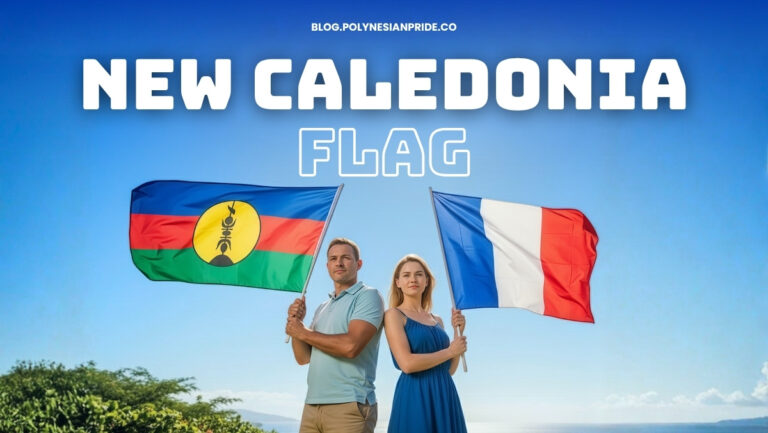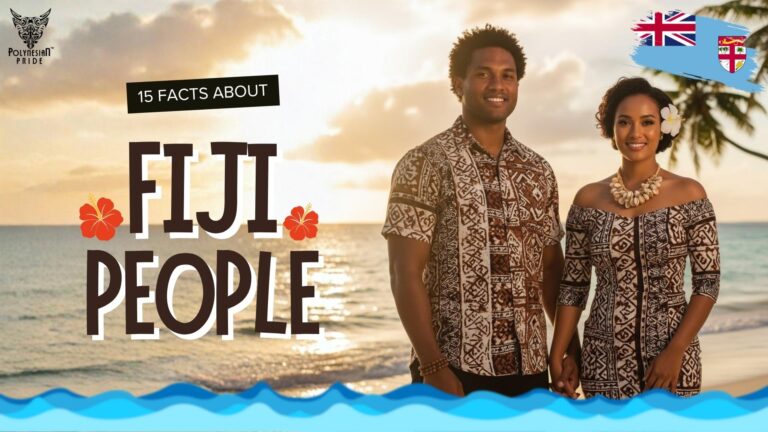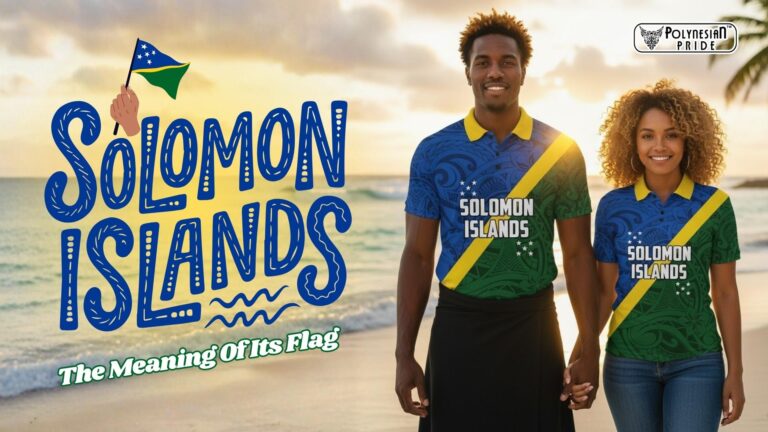Explore the Beautiful Meaning Behind the Vanuatu Flag
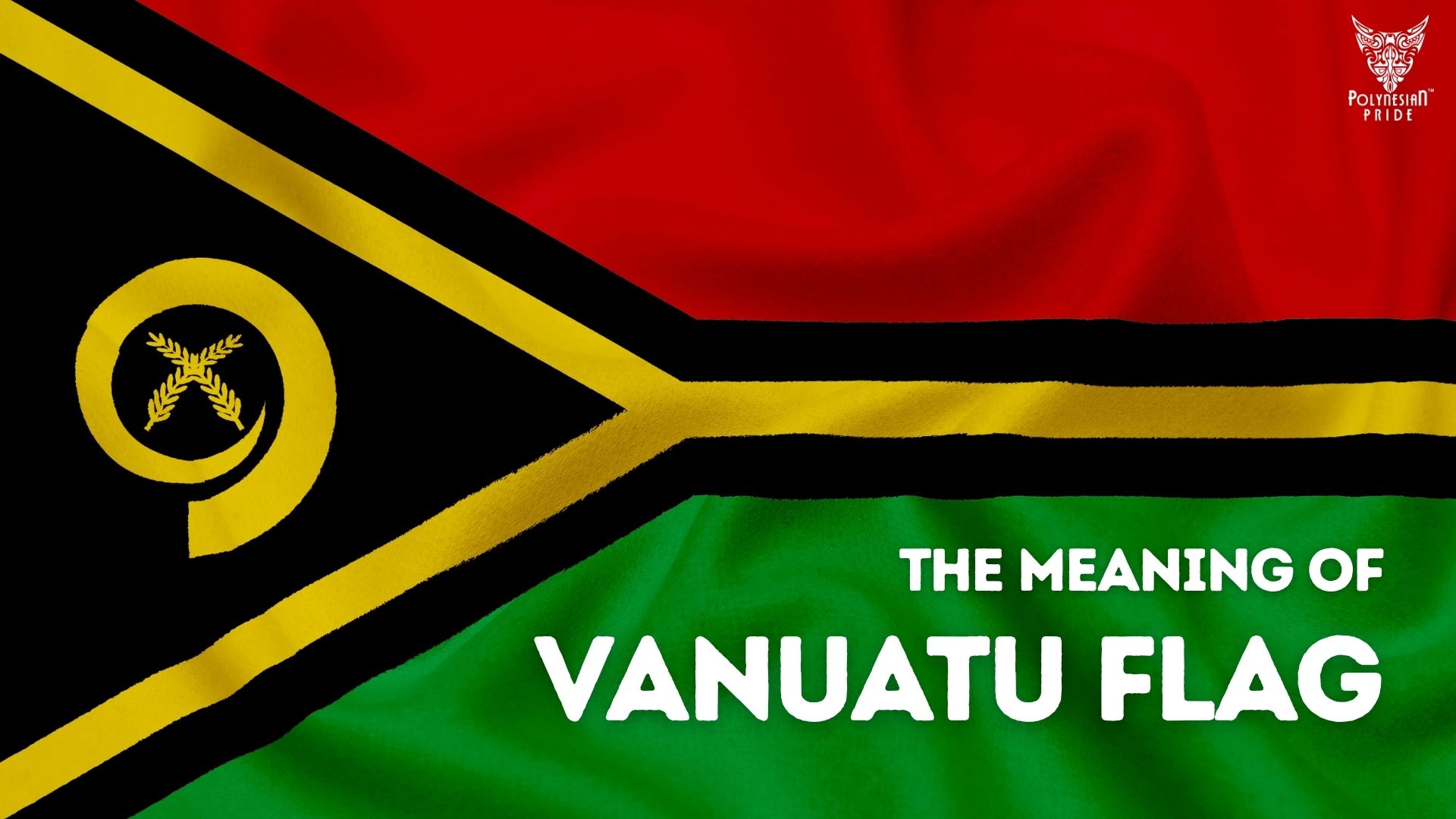
Tucked away in the South Pacific, Vanuatu is a small island nation bursting with culture, color, and character.
Among its many symbols, the Vanuatu flag stands out – bold, vibrant, and full of meaning. More than just red, green, black, and yellow, it tells a story of freedom, unity, and the islanders’ deep connection to their land and traditions.
Whether you’re a traveler or a culture lover, this flag offers a glimpse into the heart of Vanuatu.
Quick Facts About the Vanuatu Flag
Before diving into its colours and meaning, let’s take a quick look at what makes the flag of Vanuatu one of the most striking and meaningful flags in the Pacific region.
- Officially adopted: 18 February 1980, just months before Vanuatu gained independence from joint British and French rule.
- Designer: Local artist Kalontas Mahlon, whose design was chosen through a national competition.
- Flag layout: A horizontal “Y” shape divides the flag into red (top) and green (bottom) sections, outlined in black with a golden border.
- Unique emblem: Inside the black triangle rests a boar’s tusk — a Melanesian symbol of prosperity and peace that crossed with two namele fern leaves, representing strength and unity.
- Colours used: Red, green, black, and yellow — each rich in local significance.
Today, the flag proudly waves across government buildings, schools, and island festivals, embodying the independent spirit and cultural pride of the Vanuatu people.
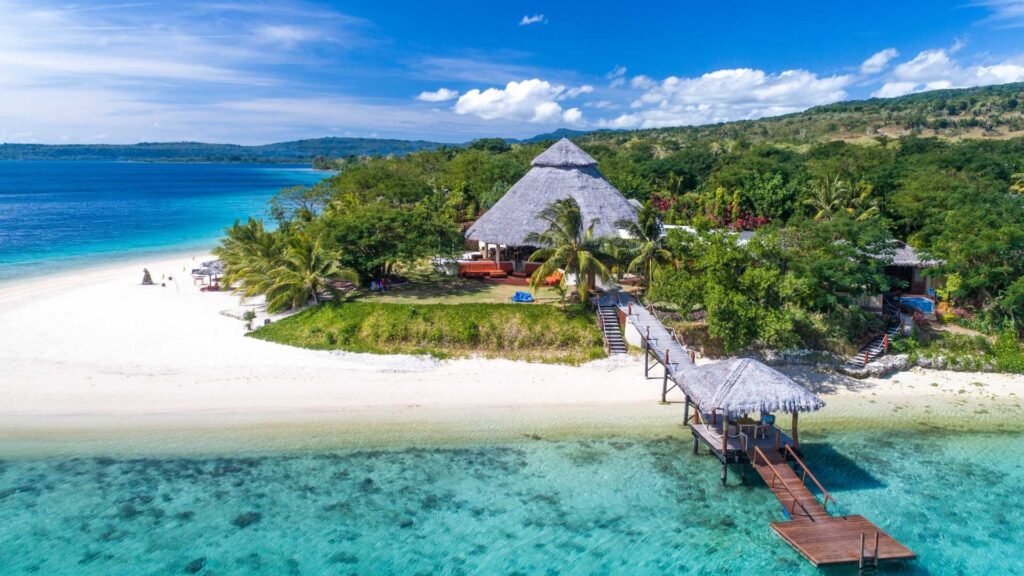
Meaning Behind the Colours and Symbols
If you’re curious about the Vanuatu flag meaning, each color and symbol reflect a powerful connection between tradition, faith, and nature.
❤️ Red: Sacrifice and Unity
The red stripe represents the blood of boars and men, symbolizing the sacrifices made during the nation’s struggle for freedom and the unity of the Vanuatu people. It’s a reminder of shared history and resilience across the islands.
💚 Green: Land and Prosperity
Green stands for the rich land — the forests, farms, and fertile soil that sustain island life. For Vanuatu, nature isn’t just scenery; it’s life itself. The colour celebrates the deep respect the locals have for their environment.
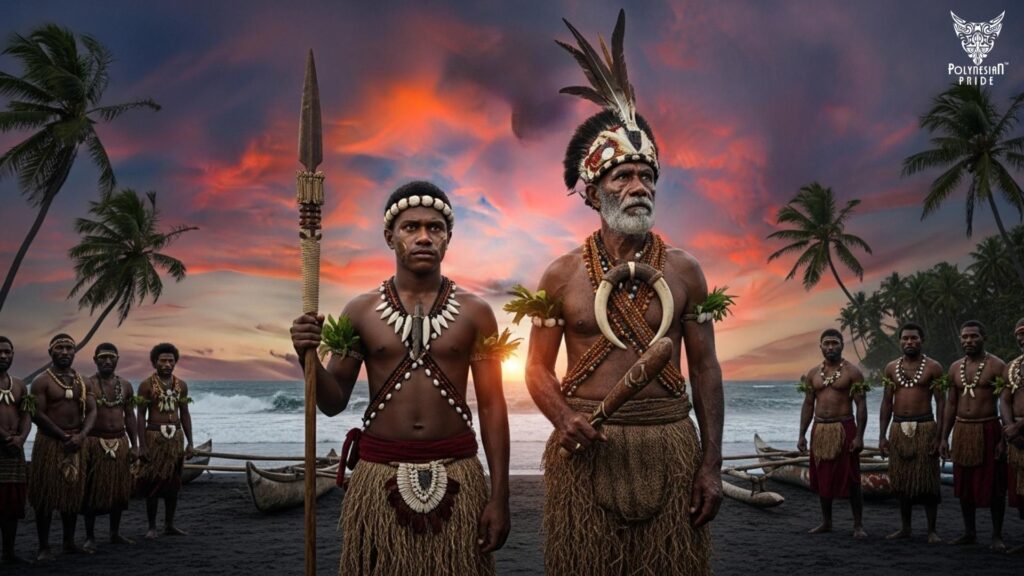
🖤 Black: The People of Melanesia
Black represents the Melanesian heritage of Vanuatu’s population. It’s a proud tribute to their identity and ancestral roots — a unifying thread connecting Vanuatu to its neighbours, such as Fiji, Papua New Guinea, and the Solomon Islands.
💛 Yellow: Faith and the Path of Light
The thin golden border that forms a “Y” shape symbolizes Christianity — a guiding light for the nation — and the shape itself shows how the islands of Vanuatu are spread across the Pacific Ocean.
🌀 Boar’s Tusk and Namele Leaves
Inside the black triangle sits a boar’s tusk, a revered Melanesian emblem of wealth, peace, and tradition, crossed with two namele fern leaves, which symbolize strength and protection.
Together, they remind Vanuatu’s people of their shared duty to safeguard their culture and land.
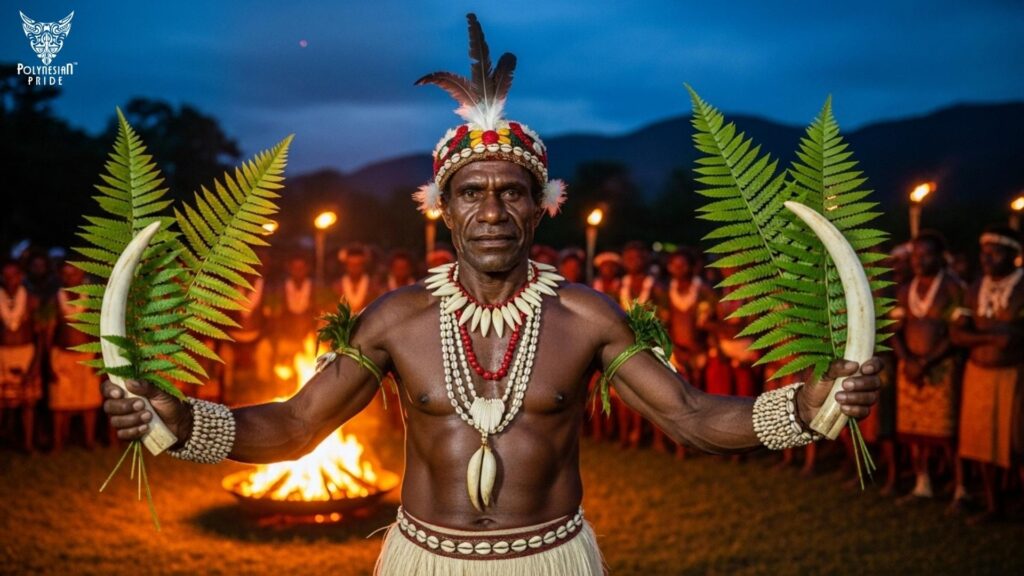
The Vanuatu flag colours and symbols blend faith, tradition, and nature — a perfect reflection of the nation’s spirit: proud, peaceful, and deeply rooted in its heritage.
A Brief History of the Vanuatu Flag
Before becoming the independent nation of Vanuatu, these islands were known as the New Hebrides, a rare colonial condominium jointly ruled by Britain and France.
For nearly 70 years, the islands flew variations of the Union Jack and Tricolour, symbols of foreign power that didn’t reflect the spirit of the local Melanesian people.
Designing a New Identity
As independence approached in 1980, community leaders launched a national movement to create a flag that would truly represent the islands’ culture and unity.
Schools and artists were invited to submit ideas, and one design — by local artist Kalontas Mahlon — captured the hearts of the people.
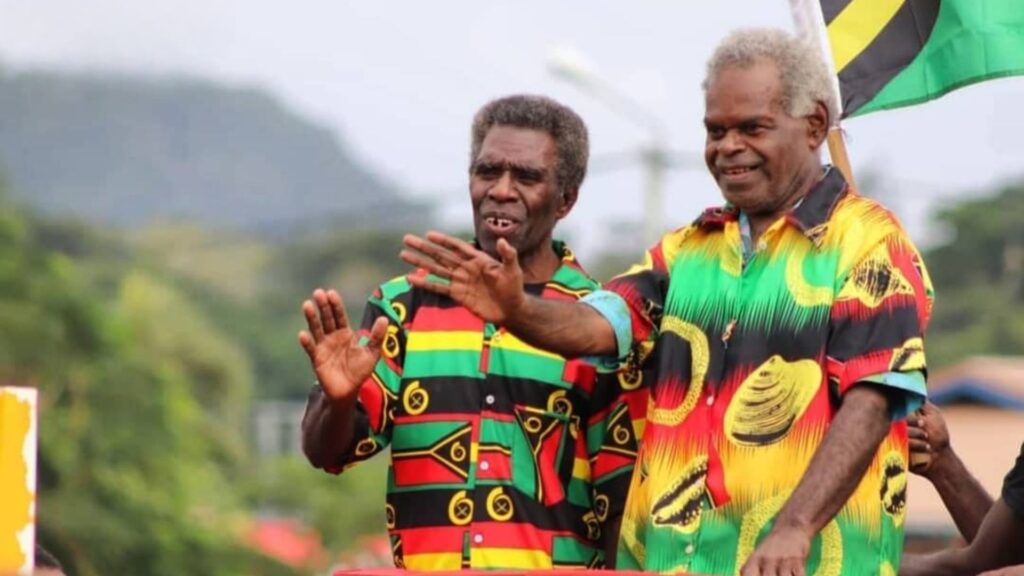
Adoption and Independence
On 18 February 1980, the final design was officially adopted, just months before Vanuatu achieved independence on 30 July 1980. When the flag was first raised in the capital, Port Vila, thousands gathered to witness history — singing, dancing, and celebrating as colonial flags were lowered for the last time.
The Flag as a Melanesian Symbol
The Vanuatu flag history marks a proud moment in the Melanesian story. Alongside neighbours like Fiji, Papua New Guinea, and the Solomon Islands, Vanuatu embraced a flag rich with indigenous symbolism, the black of its people, the boar’s tusk of prosperity, and the red of sacrifice.
Since that day, the flag has flown as a constant reminder of freedom, resilience, and cultural pride. For travellers, spotting it in villages or at the waterfront in Port Vila feels like witnessing a living piece of Pacific history.

The Vanuatu Flag in Daily Life and Culture
The Vanuatu flag isn’t just seen on official buildings – it’s woven into daily life across the islands. From bustling markets in Port Vila to quiet coastal villages, the flag’s colours appear everywhere, reminding locals of unity, faith, and freedom.
In Schools and Communities
Each morning, children in schools around Vanuatu raise the flag while singing the national anthem. Teachers often use this moment to teach about Vanuatu’s independence and Melanesian heritage, helping young generations understand the story behind their national colours.
Each morning, children in schools around Vanuatu raise the flag while singing the national anthem. Teachers often use this moment to teach about Vanuatu’s independence and Melanesian heritage, helping young generations understand the story behind their national colours.
During Celebrations and Festivals
The flag becomes a central symbol during significant events such as Independence Day on July 30, local church feasts, and sports tournaments. Villages are decorated with the red, green, and yellow colours that mirror their vibrant culture and joyful island spirit.

In Art, Clothing, and Crafts
You’ll often find the Vanuatu flag colors reflected in woven baskets, painted carvings, and even traditional dance costumes. Artists proudly use the flag’s palette to express national pride while keeping ancestral art alive.
A Symbol of Identity and Respect
For the Vanuatu people, the flag stands as a daily reminder of resilience and unity after years of colonial rule. It represents the balance between tradition and progress – a small but powerful emblem of who they are as a nation.
A Small Flag with a Big Story
The Vanuatu flag is more than a national emblem — it’s the heartbeat of an island nation rich in spirit, tradition, and pride. Its bold colours and ancient symbols tell the story of a people who value their land, their freedom, and their deep connection to the ocean.
From classrooms and churches to Independence Day parades, the flag waves as a daily reminder of resilience and unity. It reflects the soul of the Vanuatu people — proud Melanesians who blend faith, culture, and community in every part of life.
For travellers, spotting the flag fluttering in the island breeze is like seeing Vanuatu itself: bright, grounded, and full of meaning. It stands as a reminder that even the smallest nations can carry the biggest stories — painted in red, green, black, and gold, shining proudly across the Pacific.
FAQs About the Vanuatu Flag
1. What do the colours on the Vanuatu flag represent?
The Vanuatu flag colours each carry profound meaning. Red stands for unity and sacrifice, green for fertile land, black for the Melanesian people, and yellow for faith and light. Together, they symbolize the nation’s balance between tradition, community, and nature.
2. What does the boar’s tusk on the Vanuatu flag mean?
The boar’s tusk is a traditional Melanesian symbol of wealth, peace, and prosperity. In Vanuatu, it’s a sacred item worn in ceremonies and used in art. The flag represents national pride and cultural heritage passed down through generations.
3. When was the Vanuatu flag adopted, and who designed it?
The Vanuatu flag was officially adopted on 18 February 1980, just before independence from joint British and French rule. It was designed by Kalontas Mahlon, a local artist whose work was chosen in a national competition to symbolize unity and freedom.
4. What is the history behind the Vanuatu flag and independence?
The Vanuatu flag history begins during the final years of colonial rule in the New Hebrides. As independence approached in 1980, the new flag replaced colonial symbols, marking the birth of a proud nation with a strong Melanesian identity and cultural roots.
5. What makes Vanuatu unique in the Pacific?
Unlike many nearby nations, Vanuatu blends both British and French heritage with strong Melanesian traditions. Its mix of cultures, languages, and landscapes makes it one of the most diverse and welcoming destinations in the South Pacific.

I am a cultural historian and editor with over 10 years of research into pre-contact Polynesian history, the Lapita migration, and oral traditions. Share the excitement of my latest publications.
My contact:
Email: [email protected]
Tel: +64 21 456 7890



